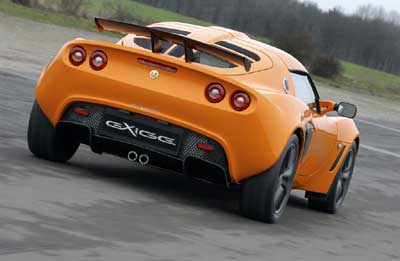When an anonymous South East Asian customer asked Lotus to design and build a Lotus Exige racing car, all it asked was ‘when do you want it?’
Most production vehicle makers would have laughed at the reply ‘in six months’, but Lotus just got on with the job. In an environment where the solution to long lead times for new model introduction is addressed by total computer integration from day one, Lotus went back to its traditional roots.
It assembled a small design and manufacturing team so that effective communication was second nature, and chose tried and trusted suppliers and processes to minimise surprises and speed up problem resolution. And most radical of all, it opted for traditional processes — hand sketches and clays.
Key to the whole exercise was the inclusion of Racing Technology Norfolk (RTN) to produce the specialist lightweight carbon-fibre bodywork which was to be mated to a standard Elise aluminium extruded and bonded chassis.
The Exige racer is 200mm longer and 100mm wider than the road version to accommodate the larger engine and gearbox, wider track, longer wheelbase and to optimise the aerodynamics.
Consequently there was considerable redesign of the existing bodywork.
The racer required a new front clamshell, ‘A’ panel, body side outer and sill, roof, engine cover and rear clamshell, plus some specialist aerodynamic parts such as splitters, rear wing and rear defuser.
All these were made in lightweight Zpreg carbon-fibre by RTN using an innovative low-temperature curing process. The moulds were taken straight off the styling ‘clay’ and the panels were race-ready without having to rely on the costly tooling process usually associated with carbon-fibre technology. It is thought to be the first time this technology has been used on such large panels.

Low temperature curing pre-pregs are made the same way as conventional pre-pregs but have resin chemistries that allow curing to be achieved at temperatures from 60–100°C. At 60°C, the working life of the material may be limited to as little as a week, but above this, times can be as long as several months. The flow profiles of the resin systems allow for the use of vacuum bag pressures alone, avoiding the need for high-pressure autoclaves.
Zpreg is a selective resin impregnation technology developed by the Advanced Composites Group (ACG) for rapid lay-up and moulding of laminates using an oven/vacuum bag curing process. The material achieves high-quality pit-free surfaces and low internal voidage in all component types.
The technology can also be used in autoclave or press moulding processes and can be adapted for shorter cycle time and higher temperature cures.
Zpreg materials may be single fabrics or, more often, two specific fabrics laminated together. There are two types: surfacing plies and backing plies depending on the application. The surface ply usually consists of a lightweight fabric laminated to a dry, medium-weight fabric using stripes of resin. The resin impregnates the lightweight fabric to provide light tack, while a heavier inner one retains a dry surface. This ensures that air is channelled away from the tool face before the resin stripes close.
Both the surfacing ply and the Zpreg backing plies handle as if they were ‘dry’ un-impregnated materials giving excellent drape characteristics, which significantly reduces manufacturing times.
When compared to standard pre-preg processes, the reduction in laminating times can be as much as 70 per cent. However, in applications where surface filling and abrading has been a major cost element, it is the quality of the Zpreg surface finish which potentially offers the greatest cost savings so it is ideal for automotive Class ‘A’ external surfaces.
With such a tight build schedule, the car was run only briefly in the workshop, with a short systems check at the Lotus test track. Once baseline set-up had been established, the car was sent to its owner for local development prior to the new racing season in September.




Nanogenerator consumes CO2 to generate electricity
Whoopee, they've solved how to keep a light on but not a lot else.